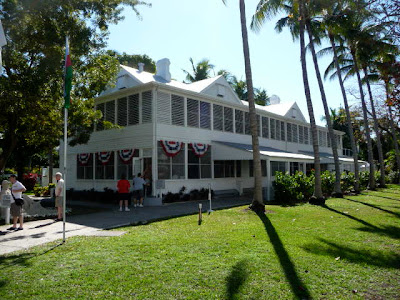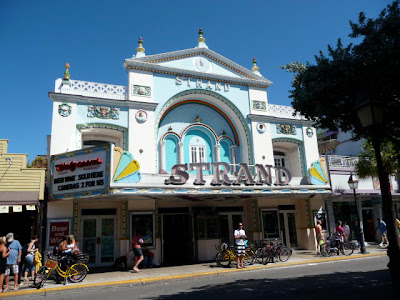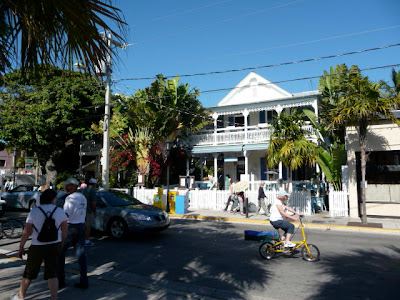For as long as I can remember, I had fantasized about driving down to Key West. This started long before I became aware that I was gay, or that Key West was a well-known gay destination at the time. As best I recall, it stemmed from a childhood fascination with roads, bridges, tropical islands and remote places at the end of the world.
I finally got to make the drive on this trip, maybe 40 years after I first started thinking about it. It is every bit as beautiful as I imagined. For long stretches, it's just you, the ocean and the next little island off in the distance:

But there was one thing different from what I had read as a child. The original bridges were built about a century ago for Henry Flagler's Florida East Coast Railway, and then rebuilt into highway bridges after the railroad was wrecked in a 1935 hurricane. Sometime in the last couple of decades, however, the state seems to have built an entirely new roadway, leaving the old bridges abandoned nearby:

You can still see them from the new highway, including details of how they were constructed. Because the water around the Keys is so shallow (the Keys are basically one giant coral reef) many of the bridges are stone archwork, converting to steel beams in the deeper areas.

One of the old bridges, at Bahia Honda in the lower Keys, is even a truss span with the highway overlaid on top, since the trusses weren't wide enough to contain two lanes of highway traffic within them:

The new bridges, all swooping prestressed concrete, aren't nearly as atmospheric. But take a closer look at one of the old bridges and you'll see why they were abandoned:

What happened here was basically that they laid a two-lane highway on what had been a one-track railroad structure, so they had to jam it in as tightly as they could, leaving no room for breakdown lanes, never mind enough width for SUVs and modern tractor-trailers. So driving these old spans must have been perilous, if atmospheric.
Today some of the old spans have been refurbished, at railroad width again, into hiking/biking trails or fishing piers:

And I understand there are plans to reconnect all the old spans into
a continuous trail running the length of the Keys. When that's done, it will definitely be worth another visit.




































